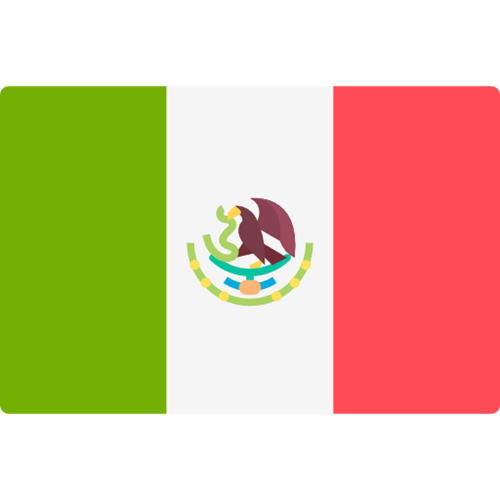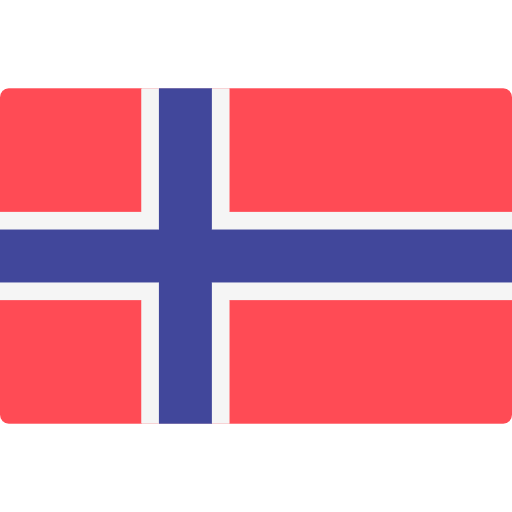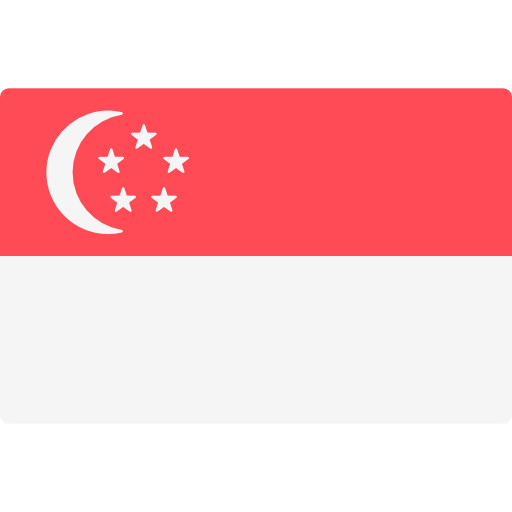Chemicals | Monthly bulletin | January 2024


Europe
Publication of REF-10 project report on consumer products
On 13 December 2023, the European Chemical Agency (ECHA) published the REF-10 project report on the integrated chemical compliance of products.
The project covered REACH restrictions, duties applicable to substances in articles under REACH, POPs restrictions and restrictions derived from the Toys and RoHS Directives. The checks were carried out by the national enforcement authorities 2,400 products in 26 countries during 2022, most of which were intended for consumers, and found that more than 400 of them were in breach of the EU’s chemicals laws.
Excessive levels of hazardous chemicals, such as lead and phthalates were found in products such as electrical devices, sports equipment, toys and fashion products.
For more information, please consult the official publication on the ECHA website here.
Recent publications on REACH Regulation
The following table provides a non-exhaustive summary of some recent updates regarding REACH Regulation (EC) No 1907/2006:
| Summary of the most recent updates | ||
|
Date |
Subject |
Link |
|
28/11/2023 |
The European Chemicals Agency (ECHA) published reports related to PVC additives and microparticle releases. Its investigation focused on limiting the use of 63 PVC additives to minimise release of PVC microplastics, as requested by the European Commission. |
For more information, consult the ECHA’s website here. |
|
13/12/2023 |
The European Chemicals Agency (ECHA) published Draft Community Rolling Action Plan (CoRAP) update for years 2024-2026. The draft is for an annual update of the CoRAP and covers the three subsequent years 2024-2026. It contains substances suspected of posing a risk to human health or the environment. The Committee is expected to give its opinion on this draft update in February 2024. Based on the Committee’s opinion, ECHA aims to adopt and publish the CoRAP update for 2024-2026 on 19 March 2024. |
For more information, consult the ECHA’s website here. |
|
13/12/2023 |
Nanopinion on an ancestral molecular response to nanomaterial particulates was published in European Union observatory for Nanomaterials website. |
For more information, consult the EUON website here. |
|
13/12/2023 |
ECHA has opened a call for compiling comments and evidence of Chromium trioxide, acids generated from chromium trioxide and their oligomers, to collect information for the preparatory phase of the restriction proposals. The deadline for providing input is on 13 February 2024. |
For more information, consult the ECHA website here. |
|
19/12/2023 |
Guidance on substance identification has been updated to help to identify and name substances under REACH and CLP. |
For more information, consult the ECHA website here. |
|
20/12/2023 |
The European Chemicals Agency’s (ECHA) annual report on the trade of chemicals that are banned or severely restricted in the EU has been published. It shows that the imports of PIC chemicals increased more than 20-fold in 2022. This is due to benzene as a constituent having been added to the list of chemicals subject to PIC in 2022. |
For more information, consult the ECHA website here. |
Other interesting links about REACH from the ECHA’s website
- Registry of restriction intentions until outcome - ECHA (europa.eu)
- Registry of SVHC intentions until outcome - ECHA (europa.eu)
- Substance evaluation - CoRAP - ECHA (europa.eu)
- Adopted opinions and previous consultations on applications for authorisation - ECHA (europa.eu)
- Applications for authorisation - current consultations - ECHA (europa.eu)
- Current calls for comments and evidence - ECHA (europa.eu)
- Authorisation List - ECHA (europa.eu)
- ECHA's completed activities on restriction
- Submitted restrictions under consideration
- Assessment of regulatory needs list
European Council and Parliament strike deal on CLP Regulation
On 22 December 2023, The Council and the European Parliament reached a provisional agreement which proposes a regulation about chemical substances, to better protect of human health and the environment.
The new commercial trends (such as online shopping, or the re-use of containers to buy in bulk) and new hazards (endocrine disruptors and long life of certain substances) have necessitated an update to the existing CLP Regulation (EC) No 1272/2008.
The main idea is to adapt the CLP regulation to different forms of trade, promotes the circularity of chemical products, make labels clearer and easier to understand (including digital labelling), and ensure a high level of protection against chemical hazards.
Now the next step is for the European Parliament and Council to adopt it formally.
For more information about the Council’s regulation on CLP, consult the official publication here.
Recent publications regarding CLP Regulation
The following table provides a non-exhaustive summary of some recent updates regarding CLP Regulation (EC) No 1272/2008:
| Summary of the most recent updates | ||
|
Date |
Subject |
Link |
|
07/12/2023 |
ECHA has released a reminder that from 1 January 2024, all new notifications for mixtures intended solely for industrial use (in addition to consumer and professional use) must adhere to the harmonised format detailed in Annex VIII of the CLP Regulation. This also includes placing a UFI code on the label. There is a transition period until 1 January 2025, and it is recommended that you check your obligations and benefits. |
For more information consult the European Poison Centres website here. |
Interesting links about CLP on the ECHA’s website
- Registry of CLH intentions until outcome - ECHA (europa.eu)
- Harmonised classification and labelling consultations - ECHA (europa.eu)
European initiatives publication related to chemicals
The table below summarises the recent European initiative publications by the European Commission regarding chemicals:
| Date | Title |
|
08/12/2023 |
Chemicals – making best use of EU agencies to streamline scientific assessments This initiative will:
This adopted act is open for feedback for a period of eight weeks until 4 March 2024. |
|
08/12/2023 |
Chemical safety – better access to chemicals data for safety assessments The initiative will make it easier to access and use all available data and will increase transparency. It will also enable EU and national authorities, where necessary, to commission testing and monitoring of chemical substances as part of the regulatory framework. This adopted act is open for feedback for a period of 8 weeks until 4 March 2024. |
|
12/12/2023 |
Chemicals regulation – update of EU rules for test methods This initiative will add a number of new/updated methods to the list. These methods could:
The draft act has been opened for feedback until 9 January 2024. |
|
26/12/2023 |
Persistent organic pollutants (POPs) - hexabromocyclododecane (HBCDD) This act concerns HBCDD (included in Annex I of Regulation (EU) 2019/1021). It amends the limit value for the presence of HBCDD as an unintentional trace contaminant in substances, mixtures and articles. Public consultation on the draft act was closed on 26 December 2023. |
|
01/01/2024 |
Persistent organic pollutants – PFOS limits and exemptions This measure will reduce the maximum PFOS concentration permissible as unintentional trace contaminant in substances, mixtures and articles and remove the last specific exemption allowed in the EU. Perfluorooctanesulfonic acid (PFOS) and its derivatives are listed in Annex I to Regulation (EU) 2019/1021. Public consultation on the draft act was closed on 26 December 2023. |
New European initiatives related to hazardous substances in E&E devices
In December 2023, the European Commission updated several initiatives related to hazardous substances in E&E devices.
These initiatives are in different stages of the process. Consult the following summary table for more information:
| Published initiatives | Date of status |
|
Review: Restriction of the use of hazardous substances in electronics The initiative will simplify and increase the efficiency of the current rules and improve enforcement of the limited use of certain harmful substances in electrical and electronic equipment in order to protect human health and the environment and ensure proper functioning of the internal market. |
European Commission adopted it on 7 December 2023 |
|
This initiative proposes amending the list of restricted substances in Annex III of Directive 2011/65/EU. The Commission has assessed three exemption requests on the use of cadmium in quantum dots in LED lighting and displays. |
Commission adoption was planned for second quarter 2023, but it's still pending. |
UK
Extension of exemption period for PFOA in POP Regulation
On 15 November 2023, the Secretary of State published the Statutory Instruments No. 1217 related to the Persistent Organic pollutions Regulation, which amended the UK POP.
This Statutory Instrument adapts Annex 1 to Regulation (EU) 2019/1021 to a change to the list of substances set out in Annex A to the Stockholm Convention on Persistent Organic Pollutants.
The main point is that the following substances have been added:
| Substances | Limits |
|
PFHxS and any of its salts (in a substance, mixture or article) |
≤ 0.025 mg/kg |
|
Any PFHxS-related compounds (in a substance, mixture or article) |
≤ 1 mg/kg (0.0001% by weight) |
|
PFHxS, any of its salts, and any PFHxS-related compounds (fire-fighting foam mixtures) |
≤ 0.1 mg/kg (0.00001% by weight) |
It came into force on 16th November 2023.
Japan
Japan Prohibits PFHxS and its Salts
On 1 December 2023, Japan’s Ministry of Economy, Trade and Industry (METI) issued Cabinet Order No. 343 to classify perfluorohexane sulfonic acid (PFHxS) and its salts as a Class 1 chemical under the Chemical Substances Control Law (CSCL). The new designation will prohibit the use, manufacture and import of PFHxS and its salts and also prohibit the import of ten categories of products containing PFHxS and its salts.
The Cabinet Order will come into effect on February 1, 2024. As o June 1, 2024, the import of the following product categories containing PFHxS and its salts will be prohibited:
- Treated fabric with water-repellent or oil-repellent properties.
- Etching agents used for processing metals.
- Etching agents used for manufacturing semiconductors.
- Surface treatment agent for plating and their preparation additives.
- Anti-reflective agents used for manufacturing semiconductors.
- Resists for semiconductors.
- Water repellent, oil repellent, and fiber protecting agent.
- Fire extinguishers, fire extinguishing agents, and fire extinguishing foam.
- Treated clothes with water-repellent or oil-repellent properties.
- Treated Floor coverings with water-repellent or oil-repellent properties.
Sustainability, circular economy and environment
Miscellaneous technical publications relating to environmental, plastics, packaging and waste
The table below summarises the most recent publications regarding the environment, circular economy, and sustainability (non-exhaustive):
| Entity | Date | Publication |
|
European Commission |
28/11/2023 |
EU forests – new EU Framework for Forest Monitoring and Strategic Plans The aim is to develop an EU-wide forest observation framework to provide to detailed, accurate, regular, and timely information on the condition and management of EU forests, and on the many products and ecosystem services that forests provide. This adopted act is open for feedback until 7 February 2024. All feedback received will be summarised by the European Commission and presented to the European Parliament and Council with the aim of feeding into the legislative debate. |
|
European Commission |
01/12/2023 |
New product priorities for Ecodesign for Sustainable Products The aim is to make products sold in the EU subject to the Ecodesign requirement (performance and information-related) to ensure greater sustainability. Commission adoption is planned for first quarter 2024. |
|
European Council |
7/12/2023 |
Net-Zero Industry Act: Council adopts position to boost technologies for the green transition The Council has adopted its position supports the main objectives of the Net-Zero Industry Act, but introduces several improvements, such as enlarging the scope of application, and clarifying the rules for permit-granting procedures, access to market and public procurement and promoting skills, and research and innovation. |
|
European Council |
09/12/2023 |
The Council presidency and the European Parliament’s negotiators have reached a provisional agreement on the proposal on harmonised rules on artificial intelligence (AI). The AI act has the main idea is to regulate AI based on the latter’s capacity to cause harm to society following a ‘risk-based’ approach: the higher the risk, the stricter the rules. |
|
French Ministry of Ecological Transition |
10/12/2023 |
This decree defines the obligations of eco-organisations to contribute to or provide for the collection, recycling and reuse of waste from household packaging, printed paper and paper for graphic use. It also defines the specifications for individual systems put in place, where applicable, by producers to individually fulfill their extended responsibility obligations. |
|
European Council |
14/12/2023 |
The due diligence directive will set obligations for large companies regarding actual and potential adverse impacts on human rights and the environment, with respect to their own operations, those of their subsidiaries, and those carried out by their business partners. |
|
European Council |
18/12/2023 |
The Council has reached an agreement on a proposal for a regulation on packaging and packaging waste. The aim is to minimise packaging waste generated in the EU. The proposal will serve as a mandate for negotiations with the European Parliament on the final shape of the legislation. Main changes agreed by the Council are:
The proposal will serve as the Council’s mandate for negotiations with the European Parliament on the final shape of the legislation. The outcome of the negotiations will have to be formally adopted by the Council and the Parliament. For more information, consult the European Council website here. |
|
European Council |
22/12/2023 |
The Council and the Parliament have reached a provisional political agreement on the proposed regulation establishing a framework for setting ecodesign requirements for sustainable products. The ecodesign regulation would be applicable to almost all categories of products (i.e. dishwashers, televisions, windows, car chargers, etc). It establishes a harmonised framework for setting of requirements for specific product groups to make them not only energy and resource-efficient (as it was the case in the existing 2009 directive) but also more durable, reliable, reusable, upgradable, reparable, recyclable and easier to maintain. The Commission will be able to propose new requirements by delegated acts when new kinds of products or technologies call for it. |
|
European Council |
22/12/2023 |
Council and Parliament strike provisional deal on design protection package The Council and the European Parliament have reached a provisional deal on the revision of the two legislative proposals of the designs package: the directive for the legal protection of designs and the regulation on Community designs. The new texts update the 20-year-old design legislation, aiming to facilitate the protection of industrial designs and adapt EU law in this area to the challenges of a digital and 3D-printing world. |
|
International Organization for Standardization (ISO) |
In 2023 |
In 2023, the International Organization for Standardization (ISO) introduced several standards related to microplastics from textile sources. These standards describe methods and qualitative-quantitative analytical evaluation of microplastics. The standards are:
|
















































